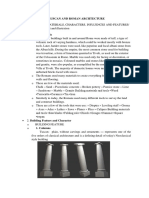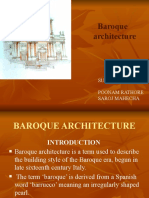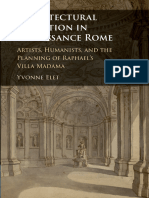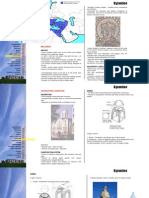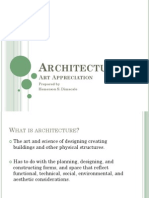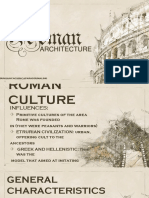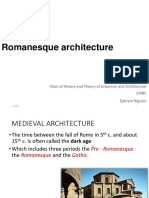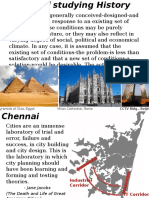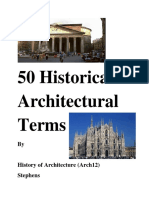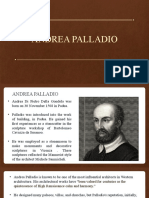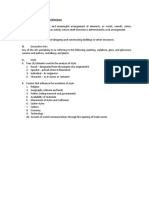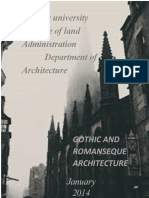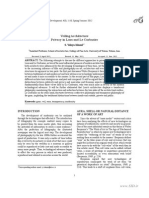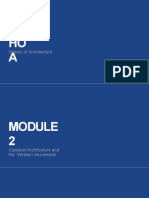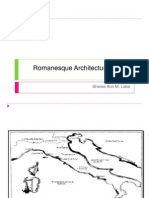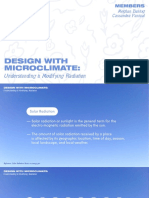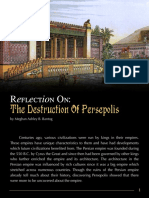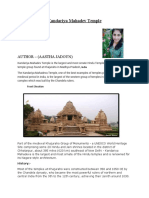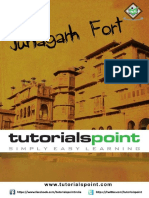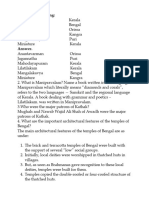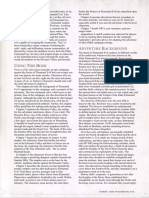0% found this document useful (0 votes)
369 views9 pagesEtruscan Architecture & Roman Influence
The document summarizes key architectural features of the ancient Etruscan civilization and their influence on later Roman architecture. Some notable Etruscan architectural characteristics discussed include their frequent use of terracotta for temples and sculptures, their tombs which resembled houses with stone furnishings, and fresco wall paintings depicting Etruscan culture. Etruscan temples had high podiums and terracotta figures of gods and animals. The Etruscans also utilized arches and influenced later Roman innovations in drainage systems, city walls, and temples built on high platforms. Overall, the Etruscans helped shape Roman culture, religion, and architecture through these architectural advances.
Uploaded by
Meghan BantogCopyright
© © All Rights Reserved
We take content rights seriously. If you suspect this is your content, claim it here.
Available Formats
Download as PDF, TXT or read online on Scribd
0% found this document useful (0 votes)
369 views9 pagesEtruscan Architecture & Roman Influence
The document summarizes key architectural features of the ancient Etruscan civilization and their influence on later Roman architecture. Some notable Etruscan architectural characteristics discussed include their frequent use of terracotta for temples and sculptures, their tombs which resembled houses with stone furnishings, and fresco wall paintings depicting Etruscan culture. Etruscan temples had high podiums and terracotta figures of gods and animals. The Etruscans also utilized arches and influenced later Roman innovations in drainage systems, city walls, and temples built on high platforms. Overall, the Etruscans helped shape Roman culture, religion, and architecture through these architectural advances.
Uploaded by
Meghan BantogCopyright
© © All Rights Reserved
We take content rights seriously. If you suspect this is your content, claim it here.
Available Formats
Download as PDF, TXT or read online on Scribd
/ 9
